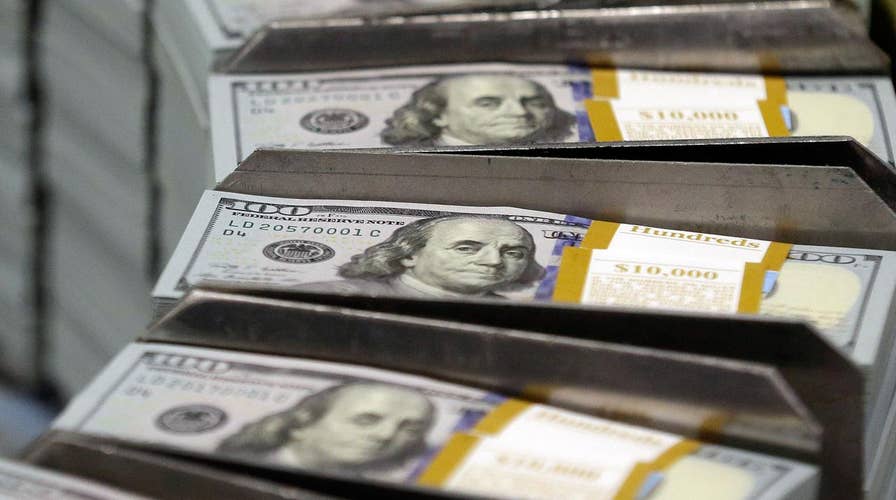Government's role in the mounting student debt crisis
Former investment banker Carol Roth on efforts to solve the mounting student debt crisis in America.
In an effort to win more popularity -- and votes -- for the 2020 election, the left is jumping on the “free” college bandwagon. Student debt has reached untenable levels, estimated at $1.5 trillion, leaving in its wake a generation of young people disenfranchised, holding pricey degrees alongside low-paying jobs.
However, getting the government (and, by definition, taxpayers) involved further in education is not the way to sort out our higher education woes. In fact, it will only exacerbate the problem. Getting the government out of higher education entirely is the only way to fix the issue and generate better outcomes.
The cost of higher education has skyrocketed, far surpassing the rates of inflation in other basic goods and services. This is the result of several issues, including the government getting into the student loan industry, as well as a societal talking point that “everybody” needs to go to college to secure their future.
NEW REPORT AIMS TO PINPOINT NATION'S MOST 'ABSURD' COLLEGE COURSES
What has happened from this is the basic economics of supply and demand. While the structure has changed over the years between government-backed, guaranteed and now, direct loans, the availability of these college loans, alongside the belief that college is a “must,” increased demand and ultimately cost. However, as the colleges have no skin in the game -- colleges get paid regardless of the outcome -- and the government does no risk evaluation, there is no counter-balancing force.
Add on top of that students and parents who aren’t savvy enough to calculate return-on-investment (ROI) for education and we have a generation saddled with $1.5 trillion in debt.
While education is incredibly important and being well-educated is typically an ingredient of success, there are a few misconceptions that need to be addressed.
First is the erroneous belief that an education is valuable at any price. While in some respects, being educated is “priceless,” most young people pursue an education for the express purpose of increasing the amount of money they make over their careers. While you will hear the left call education a “right,” it is not—it is an investment. The amount one is willing to pay for it should be based on how much of a return is made from the investment.
My own benchmark ROI for an education- which I call “The Roth Ratio” -- is that you should not pay out of pocket for an education more than the equivalent of what you will make your fifth year after graduation or up to your seventh year if you are pursuing a six+ figure career that requires an advanced degree.
So, if you estimate you are going to make $60,000 in year five, that’s the maximum amount a degree is worth to you, out of pocket. Given that The College Board reports the average price of tuition and fees for a private university 2017-2018 was nearly $35,000 without room and board, and nearly $21,000 for a public university with room and board, that’s a hard return to achieve today.
The second myth is that more education has something to do with quality. While an Ivy League institution is certainly regarded more highly than a mid-tier state school, the issue goes further than that. An engineering degree is going to likely land you a higher paying job than a gender studies degree, and no differentiation is being made for that.
And finally, there’s the misconception that there’s only one type of education. As information access has been democratized through the Internet, the cost of college should be going down. Becoming well-educated is something anyone with discipline and a web connection can do.
Also, being educated in a skill is highly valuable and often ignored. For example, many of the trades, like plumbing, provide very attractive salaries and are experiencing labor shortages, as they are being overlooked while our youth look to college instead.
So, what’s the solution? The, government needs to get out of the education lending business entirely and allow it to look like other lending markets.
Lenders evaluate mortgages and small business loans based on the credit-worthiness of the applicant and what they are lending against. The same needs to happen in education, where private loans are issued and “credit-worthiness” is judged by the performance of the student (and requirements to maintain certain GPAs), the quality of the school they are attending, and the degrees they are pursuing.
The “A” student attending a highly rated school and getting an engineering degree should be able to take out more in loans at a lower interest rate than a “C” student attending a mediocre institution studying gender studies.
Additionally, schools should provide disclosures to students and parents on the salaries that go with different degrees and careers and the maximum amount one should borrow to pursue careers with different expected outcomes. More transparency about outcomes vs. costs needs to be part of the evaluation process.
And, to manage risk for lenders to ensure a market, students should have recourse against schools if they perform well and the schools don’t deliver valuable educations, while those students maintain “skin in the game” to ensure they are using available educational resources efficiently.
CLICK HERE TO GET THE FOX NEWS APP
And as a nation, we also need to do a better job educating our youth earlier about different opportunities, including 2-year degrees and trade schools and jobs; education does not just mean a four-year college or university. We also need to do a better job of providing an education in basic economics.
While the idea of “free” plays well to the uninformed, it is not real. There’s no such thing as a “free” education. Shifting costs to taxpayers will make schools more expensive and further reduce the quality of education.




















